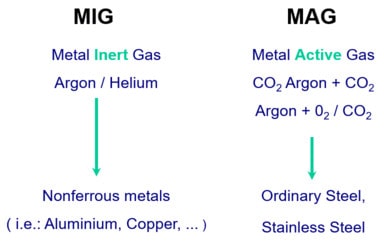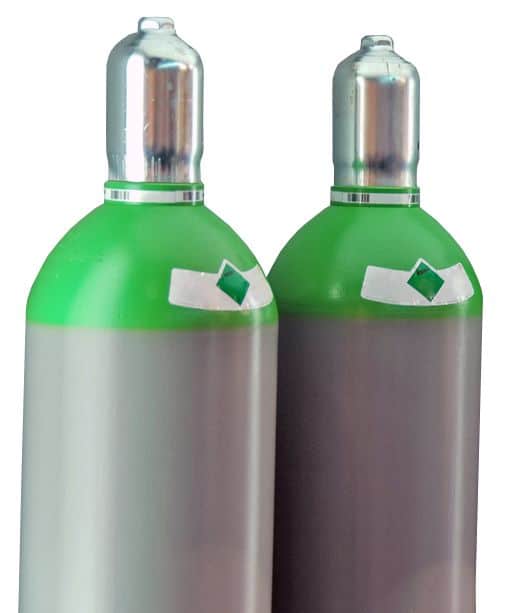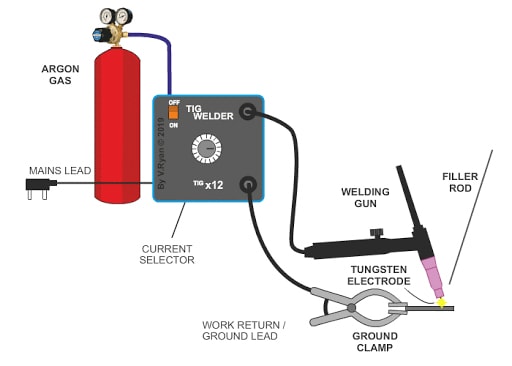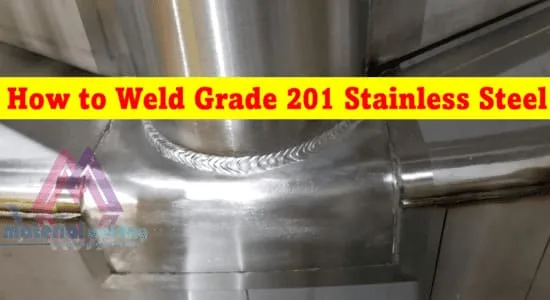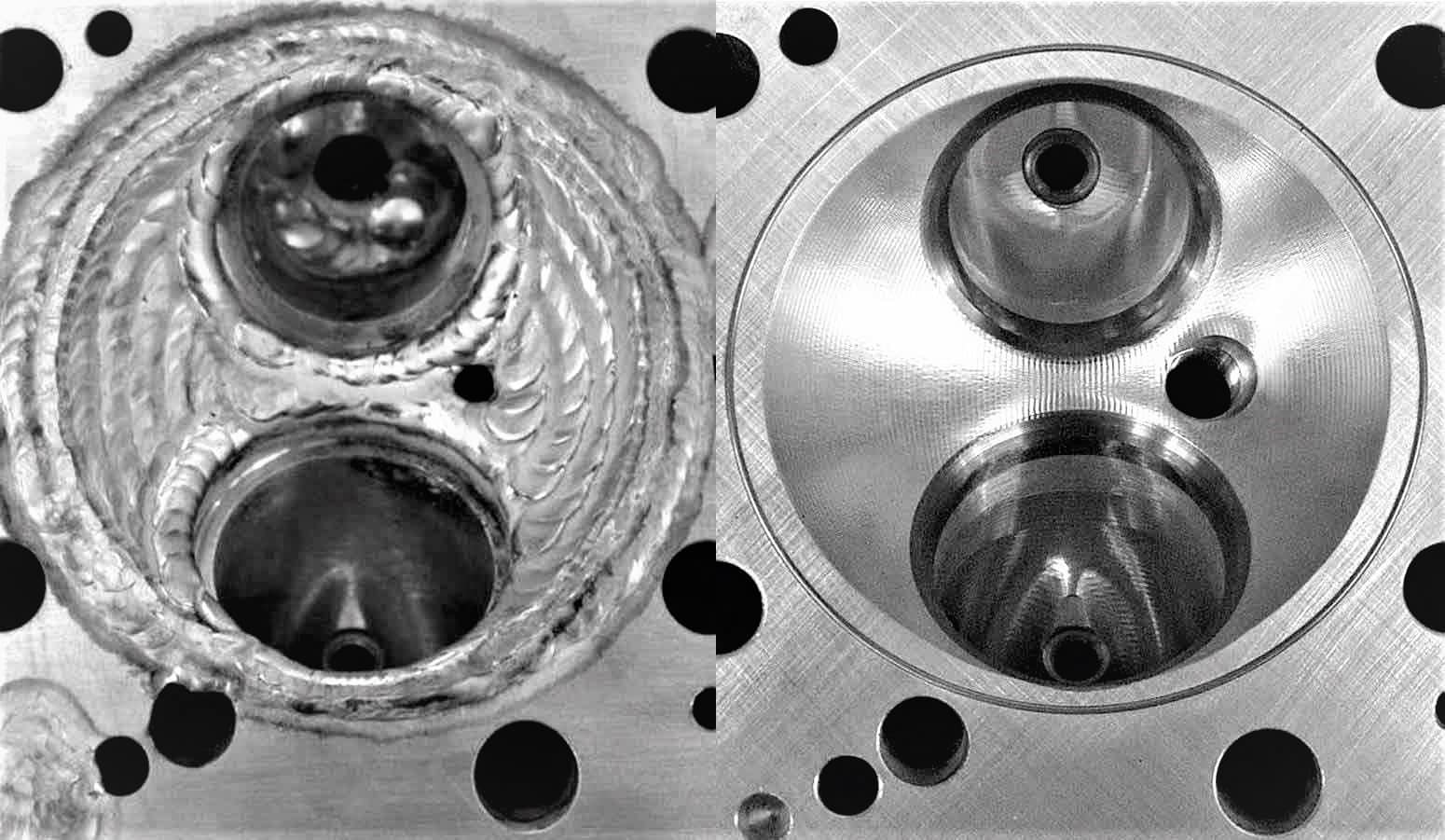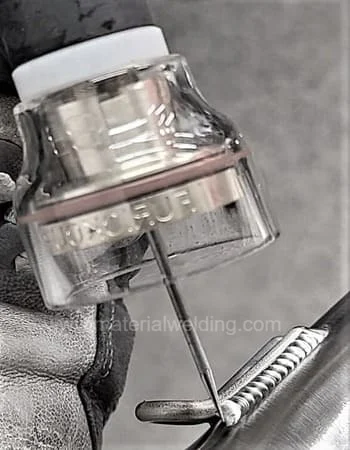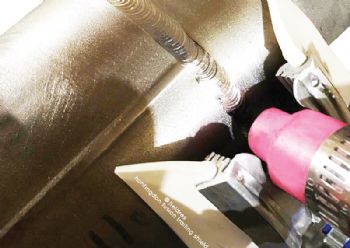Welding Gas for TIG Welding
In TIG Welding of Carbon Steel, Stainless steel, Aluminum, Copper, and Nickel Alloys, we use only inert gases such as Argon (Ar) and Helium (He) and they are the main welding shielding gases for TIG welding of stainless steel, aluminum, carbon steel, copper alloys or any other material.
These both gases are inert gases and either they are used as single components or mixed components (E.g. Argon + Helium mixture) & as a Tri-mix welding gas for special applications.
Welding shielding gases are used to protect the weld from contaminants in the atmosphere. The most common shielding gas is argon, which is inert and does not react with the weld metal.
Other shielding gases include helium, carbon dioxide, and nitrogen. Helium is used for welding aluminum because it has a lower melting point than argon. Carbon dioxide is used for thick steel plates because it provides good penetration.
A small quantity of Oxygen (O), Nitrogen (N), and Hydrogen (H) are sometimes added in argon or helium to give special characteristics to the welding gas for TIG welding of stainless steel, duplex stainless steel, Titanium or copper alloys.
Before we learn about each type of welding gas, let us first see what is meant by an Inert Gas in Welding Gas terminology.
What is an Inert Welding Gas & why are they used in Welding?
Inert Welding Gas means that there is no reaction between the molten welding pool and the shielding gas. Argon or Helium if used for welding gas shielding or purging, the weld pool will not react with these gases to make their oxides.
Difference between gas shielding, gas purging & gas trailing?
For example, if Oxygen is used for shielding, oxygen will react with elements to make their oxides such as manganese oxide or silicon oxides.
Thus precious alloying elements will be lost. But when using inert gases, these elements are preserved in the weldment without any losses and the weld also exhibits a high surface finish.
Argon being an inert gas is monatomic gas (i.e., its molecule consists of one atom instead of two atoms in the case of common gases like oxygen, nitrogen, chlorine, etc.).
Argon is taken out from the earth’s atmosphere by air liquefaction to make it 99.99% purity. It is supplied as compressed gas in cylinders or as a liquid at temperatures below —184°C in large insulated containers.
For bulk storage, the latter form is preferred, but suitable equipment must be provided to vaporize the gas for distribution on the shop floor.
Welding gases Classification System
Welding gases for shielding or purging applications are classified in AWS A5.32 specification and ISO 14175 standard for shielding gases.
What Welding Gases for TIG Welding of Stainless Steel?
Argon Welding Gas for TIG Welding of stainless steel, carbon steel, Aluminum
Argon is the most used TIG welding (GTAW) gas worldwide. The AWS A5.32 classification of pure argon is SG-A with a minimum purity level of 99.997%, maximum moisture of 10.5 ppm and maximum dew point moisture at 1 atmospheric is −76°F.
The ISO 14175 designation for pure argon is ‘I1‘. Pure argon is inert in nature and will not react with tungsten rods and weld metal. Due to the high density of argon, the shielding blanket is very effective to protect the weld pool from oxidation.
The welding arc ignition properties with argon gas are good because of the low ionization of the argon and hence it requires low welding voltage.
Helium Welding Gas for TIG Welding of stainless steel, carbon steel, Aluminum
Helium is an inert welding gas. As most of the stainless welding requires low heat input to ensure control of austenitic phases & helium gives high heat input in Welding, Pure helium is not used for welding stainless steel with TIG.
Pure helium as a welding gas is mainly used for welding of copper, magnesium, and aluminum TIG Welding.
How to weld Aluminum with TIG, MIG & stick Welding?
It is usually mixed with argon as a minor gas component. Helium is having low density compared to argon and hence it requires a higher shielding gas flow rate.
Pure helium supports globular transfer mode & it must be mixed with a minimum of 20% argon to support spray transfer mode in welding.
Argon-Helium Welding Gas mixture for TIG welding of stainless steel, carbon steel, Aluminum
AS stated, pure helium is not used for TIG welding of stainless steel & it is mixed with argon to make an effective welding gas for TIG Welding.
SG-AHe-10 gas classification as per AWS A5.32 is an example of such a gas mix used for stainless steel welding. Mainly higher helium mixtures (Such as SG-HeA-25) are used for TIG welding of copper.
When helium is added to the shielding gas, the voltage required for welding is higher. Hence, there is an increased arc temperature. This results in deeper weld penetration.
Argon-Hydrogen Welding Gas mix for TIG Welding of stainless steel, carbon steel, Aluminum
Hydrogen being a reactive welding gas is limited as a minor gas component in small quantities only i.e. usually 1 to 5% when welding stainless steel. The addition of hydrogen is beneficial to enhance the welding speed as hydrogen increases the welding heat input.
Hydrogen also provides reducing effects in weldment to eliminate oxygen from a weld that can reduce weld toughness.
These gas mixtures are used only for welding Nickel base alloys or austenitic stainless steel. Hydrogen, if used for ferritic or martensitic base materials, can result in hydrogen cracking. Examples of AWS A5.32 classification for Argon-Hydrogen welding gas are SG-AH-1 & SG-AH-2.
Argon-Nitrogen Welding Gas mix for TIG Welding of stainless steel, carbon steel, Aluminum
Argon-Nitrogen Welding gas mixtures are used mainly for welding Duplex & Super Duplex Stainless Steel Welding (Chrome-Nickel Steel).
Nitrogen being a strong austenitic stabilizer is mainly used for welding of Duplex & Super Duplex Stainless Steel to maintain the Austenite & Ferrite Phase balance in the weld microstructure.
The AWS A5.32 classification for Argon-Nitrogen mixture is SG-NH. SGNH-2 Is the most used welding gas classification for this category.
Welding Gas Chart for TIG & MIG Welding
Welding Gas Chart for TIG & MIG Welding for Carbon Steel, Stainless Steel, Duplex Stainless Steel, Nickel Alloys, and Aluminum Alloys are given below for reference purposes. Refer to actual Qualification WPS to meet Welding Gas requirements.
| Welding Gas | Carbon Steel | 300 Series Steel | 32205, 1.4462 (Standard Duplex Steel) | 32520, 32750 (Super Duplex Steel) | Ferritic stainless steel | Nickel base alloys | Aluminum |
|---|---|---|---|---|---|---|---|
| Pure Argon | ✔ | ✔ | ✔ | ✔ | ✔ | X | ✔ |
| Pure Helium | X | X | X | X | X | ✔ | ✔ |
| Argon-Helium mix | X | ✔ | ✔ | ✔ | ✔ | ✔ | ✔ |
| Argon with hydrogen 2- 5% | X | ✔ | X | X | X | ✔ | X |
| Argon with Nitrogen 1-2% | X | X | ✔ | ✔ | X | X | X |
| Argon with helium (30%) & 1-2% Nitrogen | X | X | ✔ | ✔ | X | X | X |
What is the best gas for TIG Welding?
The Best TIG Welding Gas is Argon (Ar). Argon welding gas can be used for TIG welding of Carbon Steel, Stainless Steel, Aluminum, Copper alloys, or any other material. Argon welding gas provides low ionization and thus gives low heat input.
The welds made with Argon gas shielding are of high quality and very clean surface finish. Argon is having a higher density than Helium and hence requires a low gas flow rate compared to helium.
TIG Welding Gas for Carbon Steel & low alloy steel
Argon is the primary welding gas for TIG Welding of Carbon Steel or low alloy steel. Details about various welding gases used in TIG Welding are given in the chart above for different materials.
The TIG welding gas classification for Carbon Steel welding is SG-A as per AWS A5.32 specification.
Nitrogen gas as a welding gas is never used for welding Carbon Steel, low alloy steel, or ferritic stainless steel.
The reason is- Nitrogen is responsible for welding porosity in carbon steel, mild steel, or low alloy steel & ferritic steel. The shielding gases must not also be mixed with nitrogen for these materials welding.
What Gas is Used For TIG Welding Aluminum?
TIG Welding of Aluminum is carried out using pure argon (SG-A) or Argon + Helium mixture (SG-AHe-10). But mostly pure argon is used for TIG welding of Aluminum material.
How to weld Aluminum with TIG, MIG & stick Welding?
What Shielding Gas for MIG Welding?
Argon, CO2, Argon-Helium mix, Argon-CO2 mixture are mainly used for MIG Welding gases. Click the below links to learn about various shielding gases used for MIG-MAG & FCAW Welding.
Shielding gases for MIG-MAG, TIG, and FCAW welding and shielding gases purity
Tri-Mix Welding Gas for Stainless Steel Welding
Tri-Mix or Ternary Welding Gas Mixtures are types of welding shielding gases based on three gas components. They provide additional welding arc characteristics to support metal transfer modes such as short circuit, spray or globular for example.
For carbon steel welding SG-ACO-5 (Argon balance, 5- 10% CO2, & 1- 6% oxygen) classification is mainly used in Tri-mix welding gas. SG-AHeO Tri-mix is used for welding stainless steel.
SG-AHeO contains Argon, helium, and oxygen welding gases. Helium provides high welding heat and oxygen additions give weld fluidity to eliminate sluggish weld beads.
The mode of metal transfer is usually spray transfer with SG-AHeO (Argon, helium, and oxygen) gas mix.
These gas mixtures also reduce weld porosity. SG-AHeO can also be used for welding carbon steel and low steel welding but oxygen content must be kept low.
MIG Welding Gas 75/25
MIG Welding Gas 75/25 or Argon (75%) +CO2 (25%) gas mixture is mainly used for Welding of Mild Steel, Carbon Steel, and low alloy Steel using MIG-MAG Welding.
75-25 Welding Gas Classification number is SG-AC-25 as per AWS A5.32.
Click here to Know in Details about 75/25 welding gas.
